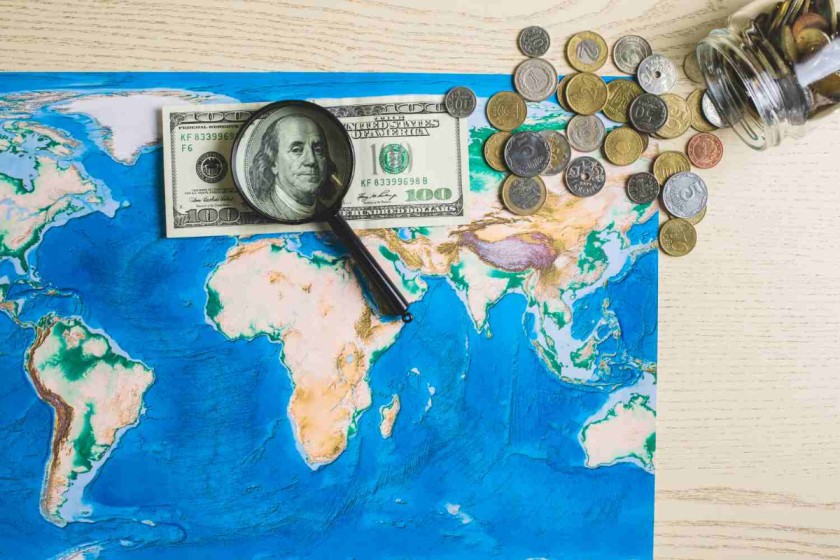- April 17, 2025
Trump’s policies are eroding the dollar’s global dominance

In 2022, Joshua Aizenman explored the US Federal Reserve’s (Fed’s) currency swap lines in his paper, concluding with a prescient question: “Will the closer alliance between the US and the EU survive beyond the Biden administration? The possible return of a future US administration that will apply ‘America First’ isolationist policies may raise questions on the credibility and the depth of US Fed backstop dollar policies.”
Fast forward to April 2, 2025 and President Trump’s aggressive stance towards key allies like the EU and Canada, coupled with the chaos of newly imposed tariffs targeting both allies and adversaries, casts doubt on the US’s willingness to act as a stabilizing force in the global financial system. Instead, the Trump administration appears to thrive on the unrelenting uncertainty and disruption it creates.
Currency swaps by the Federal Reserve are far from a modern innovation. During the Bretton Woods era, prior to 1971, these swaps were employed to shield the dollar reserves of foreign central banks from potential devaluation. As nations accumulated dollar reserves exceeding the gold reserves held by the United States, the fixed gold-todollar conversion rate of $35 per ounce made the prospect of dollar devaluation increasingly likely. Currency swaps provided a strategic solution to mitigate this risk.
Currency swaps between the Federal Reserve and central banks of other nations gained prominence during the post-Bretton Woods era, particularly in 2007, as the Global Financial Crisis (GFC) unfolded. Although the GFC originated in the United States, with US stock markets and major financial institutions experiencing the initial collapse, the crisis quickly spread across global financial markets. This, somewhat paradoxically, triggered a surge in demand for the US dollar, making it appreciate in some cases by 7% against other major global currencies like the euro, yen and sterling.
The Eurodollar market, comprising US dollars held in banks outside the United States, typically operates independently of the Federal Reserve’s oversight or support, relying solely on its own liquidity during normal conditions. However, during the GFC, the sudden surge in demand for dollars, as institutions scrambled to exchange their currencies, triggered a severe liquidity shortage in the Eurodollar market. To address this, the Federal Reserve, in collaboration with major central banks, established currency swap lines—agreements to exchange dollars for foreign currencies for a fixed period. By stepping in to backstop dollar liquidity shortages, the Fed not only prevented the financial system from collapsing entirely but also bolstered global confidence in the dollar as the premier international currency.
The dollar’s status was further reinforced during the COVID-19 pandemic, as the Federal Reserve reopened currency swap lines, expanding the list of participating central banks beyond those included during the GFC.
By acting as a global lender of last resort, the Fed demonstrated that the US is committed to supporting the stability of the global financial system. This proactive support boosted confidence among foreign governments, central banks, and investors in holding dollar reserves. Through mechanisms like currency swaps, the Fed ensured that the dollar remained highly liquid and accessible, even during market turmoil. This access to liquidity solidified the dollar’s status as the dominant global currency for trade, investment, and reserve holdings.
Trump’s criticism of the Federal Reserve, coupled with trade tariffs and isolationist policies, has fuelled doubts about the US’s commitment to maintaining global financial stability. In fact, there is an increasing perception that the Trump administration might exploit such crises to enforce economic terms on other nations, often resorting to public humiliation and coercion.
Project 2025, a policy framework linked to conservative think tanks and aligned with the potential agenda of a Trump 2.0 administration, outlines significant changes to the Fed’s role. Among its monetary policy recommendations is a proposal to limit the Fed’s lenderof-last-resort (LOLR) function. While this appears primarily aimed at curbing domestic bailouts of banks and financial institutions, it further diminishes the likelihood of extending such support to foreign central banks during crises.
Interestingly, while a global economic crisis looms, triggered by Trump’s policies, the dollar has been depreciating against most major currencies since January 2025—a stark contrast to its strengthening during the GFC and the COVID-19 pandemic.
Even as the US continues to score a self-goal by undermining the dollar’s status as the dominant international currency, many other nations have embraced the critical role of liquidity backstops during financial crises, recognizing them as essential for elevating a currency to international prominence.
Since the pandemic and more recently, the Ukraine war, the European Central Bank (ECB) has also opened euro liquidity lines with some non-euro area central banks through swap and repo operations. Liquidity lines serve as a crucial “backstop,” with surcharges on lending rates to ensure non-euro area banks prioritize borrowing from private markets before turning to the ECB as LOLR. The BoJ also has bilateral currency swap agreements with central banks like those of Australia, China, and Thailand, enabling yen-local currency exchanges to bolster regional financial stability. The People’s Bank of China (PBoC) too has implemented renminbi (RMB) swap agreements, with the majority of these arrangements being made with central banks in emerging and developing nations.
The Trump administration’s recent hostile policies, coupled with the increasing emphasis on central bank collaboration among other major nations, could weaken the dollar’s position as the dominant global currency.
Deutsche Bank’s George Saravelos echoed this concern, highlighting that fears about the reliability of the currency swap lines could “create the most significant impetus to global de-dollarisation since the creation of the post-World War global financial architecture.”
Sashi Sivramkrishna is an economist, economic and environmental historian, and documentary filmmaker.
Views are personal and do not represent the stand of this publication.
